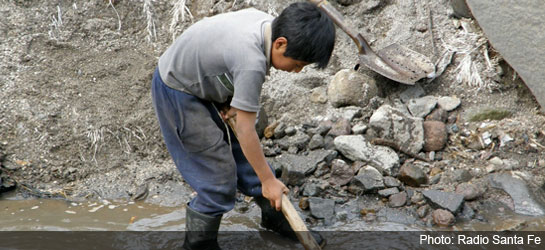
To commemorate the “World Day Against Child Labor,” Colombia’s Family Welfare Institute (ICBF) underscored statistics that claimed the country has around one million child laborers and called for political reform.
According to Colombia’s National Statistics department (DANE), child laborers are mainly concentrated in the agriculture and mining sectors.
ICBF director Diego Aponte Molano said children working in illegal mining operations posed the greatest concern due to the demanding nature of the work on top of the fact that their presence was difficult to detect. He called on the Colombian government for policy changes that will allow these children to go back to school and create a better future for themselves.
According to Ximena Norato, Director of the Foundation Agency of Journalism Communications Allied with Children, Social Development and Research, 5,000 children — around 0.5% of Colombia’s child population — work in quarries and mines in the country.
“0.5%, it sounds small, but we’re talking about 5,000 children being invisible workers, buried in mines and quarries,” Norato said. “This figure is unacceptable for any country, but it is more unacceptable that we do not know where they are, and worse, we’re not doing anything.”
Norato went on to highlight that children working in these conditions are often subjected to workloads far exceeding their physical capacity, which may have implications for future bone development and could cause lung and skin problems and even death.
Liliana Obregon, coordinator of the International Labor Organization’s (ILO) program against child labor, told Radio Nacional that beyond doing diagnostics on child workers in Colombia, the State and its subsidiary organizations must develop public policies and apply sanctions that adequately punish child labor.
According to Obregon, although there are no updated statistics on the number of child laborers in the country, the ILO estimates that there are around two million throughout Colombia– a number quite higher than the million reported by DANE.
Exploitation at home was also cited as an increasing problem, with figures showing young girls logging nearly 15 hours of work per week instead of going to school.
Obregon attributed the prevalence of child labor to the mentality of parents who believe that a child who starts working from a young age will be more prepared for adulthood.

